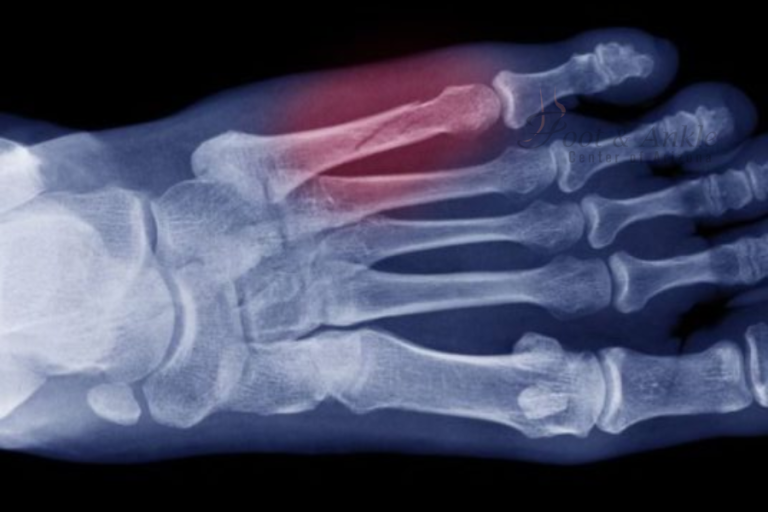How long should you ice your foot after bunionectomy surgery? After the surgery, it’s important to apply ice to help reduce swelling and pain. Ice your foot for 20 to 30 minutes at a time, several times a day. This helps your foot heal faster. Make sure to wrap the ice pack in a thin towel to protect your skin. Keep icing your foot for a few days after the surgery as directed by your doctor.
Bunion surgery can help fix painful foot problems
Procedures like chevron bunionectomy and Bunionplasty in Scottsdale are effective. However patient care after surgery is very important for success. Using ice on the operated foot is a key technique. It helps reduce swelling, control pain, and make recovery easier after bunion surgery.
Understanding Bunion Surgery.
Bunions are bumps on the side of the big toe. They can cause pain and make it hard to wear shoes. Bunion surgery is a common treatment. It can help reduce pain and improve foot shape. The surgery fixes the misaligned bone and tissue. This straightens the big toe. There are different types of bunion surgery. The type depends on the size and cause of the bunion. The surgeon will choose the right surgery for each patient. Recovery time can vary. Most people can walk again within a few weeks. Full recovery may take several months. Bunion surgery is an option for those with severe or ongoing pain.
A bunion is a bump on the side of the big toe joint. Often, surgery is needed when other treatments don’t help. The chevron bunionectomy is a good surgery for moderate to severe bunions. The bone is reshaped, and the joint is realigned to restore normal function and reduce pain. Bunionplasty procedures in Scottsdale use new techniques to improve the look and recovery after surgery.
Application of ice after bunion surgery
Using ice after bunion surgery is important. Ice can help reduce swelling and pain. It should be applied to the foot for 20-30 minutes, several times a day. This helps the healing process. Ice is a simple way to care for your foot after bunion surgery. It makes the recovery more comfortable.
Icing the foot is important after bunion surgery. It helps manage pain and aid healing. Icing constricts blood vessels. This reduces swelling and inflammation around the incision. Most experts advise icing for 15-20 minutes, frequently, in the first few days. This is the easiest and most effective way to increase comfort and speed up recovery. It helps restore normal mobility quickly.
Bunionectomy Recovery Time.
A bunionectomy is a surgery to fix a bunion. A bunion is a bump on the side of the big toe. After the surgery, it takes time to recover. The recovery time for a bunionectomy can vary. It often takes 4 to 6 weeks to fully heal. During this time, you may need to wear a special shoe or cast. You will also need to rest your foot and avoid putting weight on it. Physical therapy can help with recovery too. Full recovery from a bunionectomy may take 3 to 6 months. This means you can get back to your normal activities. However, it’s important to follow your doctor’s advice to heal properly.
Getting back to your normal life after bunion surgery happens in steps. Each step needs you to follow the instructions carefully after the surgery. First, you need to rest and keep your foot raised. This helps reduce swelling and improves blood flow. You will also need to apply ice regularly during this time. This gives relief from pain and swelling after the surgery. Over time, you can slowly start putting weight on your foot again. But you must do this under the close watch of your surgeon or a physical therapist. This helps restore your normal use and get the best results.
Managing Scars from Bunionectomy
After a bunionectomy surgery, you may have scars. Here’s how to manage those scars: Give it time. Scars take time to fully heal. Be patient as the scar matures over 6-12 months. The scar will continue to soften and fade over time. Keep it moisturized. Apply a gentle, fragrance-free moisturizing cream or ointment to the scar daily. This helps soften the scar tissue. Avoid products with perfumes. Massage the scar. Gently massage the scar with your fingers a few times a day. This helps break up the scar tissue and improves blood flow. Protect it from the sun. Sun exposure can darken and discolor scars. Use sunscreen when going outside to protect the scar. Wear shoes that cover the scar. Consider silicone products. Silicone-based gels, tapes, or pads can help flatten, smooth, and fade the scar over time. Ask your doctor about these options. Be patient and consistent with scar management. With time and proper care, the scar should gradually improve in appearance.
Here is the content with improved readability
Bunionectomy surgery aims to realign the foot so it works better. Patients worry about scarring from the surgery. Advances in techniques, like minimally invasive procedures, and good wound care can help avoid visible scars and get better results. Patients can prevent issues like scarring, visible scars, and even psychological problems. They need to follow their surgeon’s advice. This includes using topical treatments and going to follow-up appointments. Doing this helps with physical recovery and peace of mind.
Here is the improved version of the content Recovery Tips.
Here is the content with improved readability, maintaining the exact same length as the input: Icing the foot is one part of recovering from bunion surgery. But fully recovering involves more. Resting, keeping the foot raised, and taking pain medicine as directed are important. This helps control pain and aids healing. Being realistic and talking openly with healthcare providers also helps. They can address concerns and difficulties quickly. Each patient has a custom recovery plan. This makes the recovery process better and easier to get back to daily life.
Conclusion.
In summary, using ice after bunion surgery is a common part of full post-op care. Understanding how it reduces swelling, and pain, and speeds healing helps patients handle recovery better. At the Foot and Ankle Center of Arizona, people in Scottsdale can get the best care. This includes personalized treatment plans and support during the recovery journey, from bunion surgery to advanced procedures. Contact us today to schedule an appointment and learn more about our specialized bunion surgery and aftercare services.





